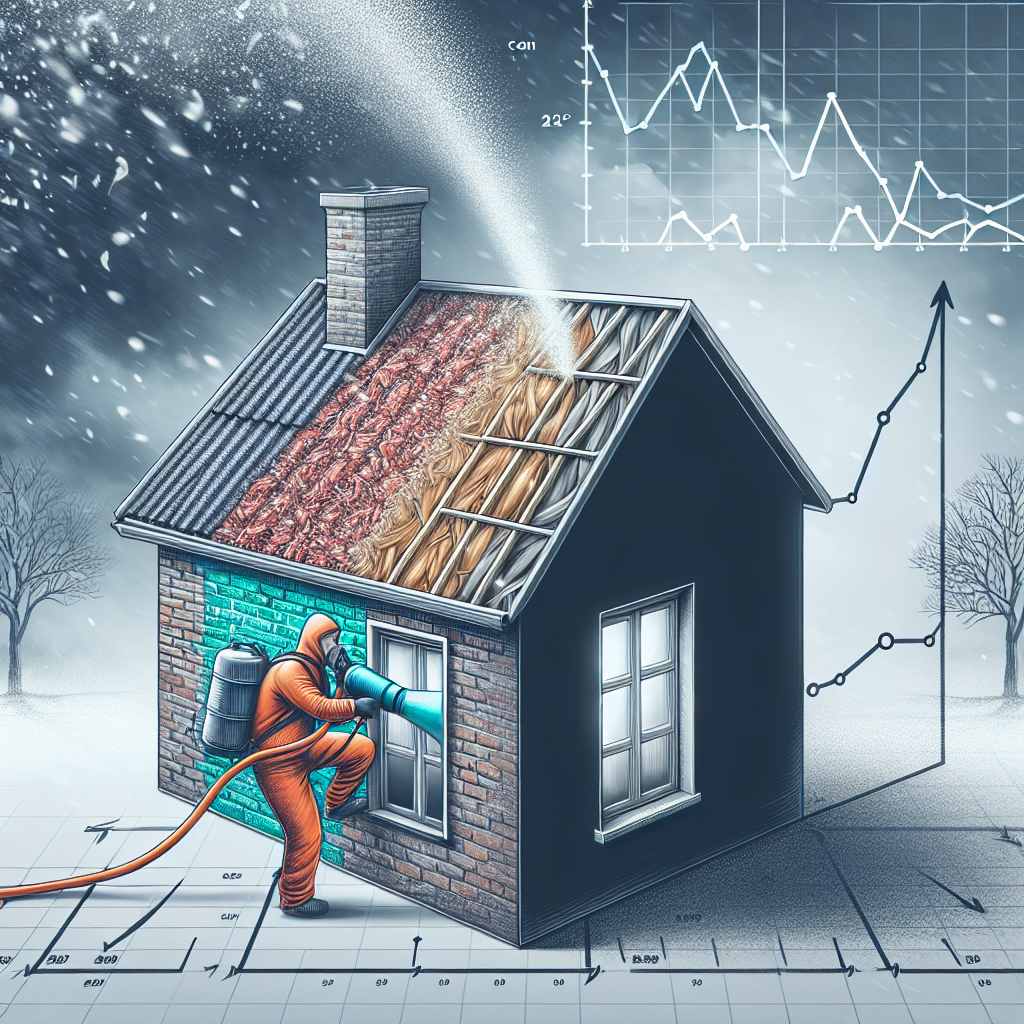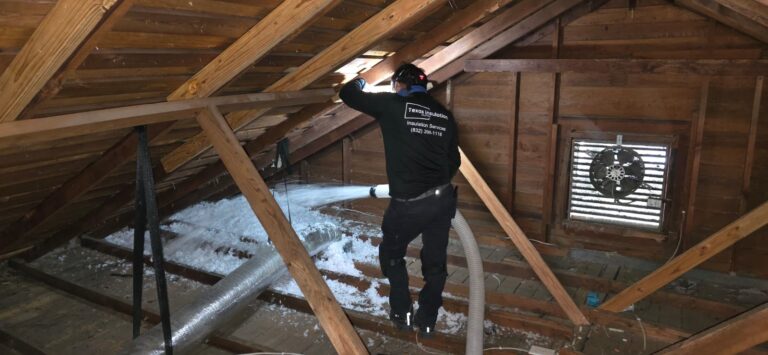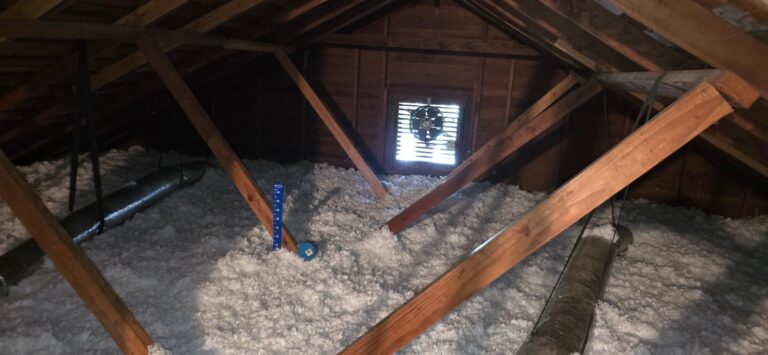-
Table of Contents
“Affordable comfort, one blown-in insulation at a time.”
Introduction
Installing blown-in attic insulation is a cost-effective way to improve the energy efficiency of a home. This type of insulation involves blowing loose fibers or particles into the attic space, creating a thick layer of insulation that helps to keep the home warm in the winter and cool in the summer. In this introduction, we will discuss the cost of installing blown-in attic insulation and the potential savings it can provide for homeowners.
The Benefits of Blown-In Attic Insulation: Cost Savings and Energy Efficiency
Blown-in attic insulation is a popular choice for homeowners looking to improve the energy efficiency of their homes. Not only does it provide significant cost savings in the long run, but it also helps to reduce energy consumption and create a more comfortable living space. In this article, we will explore the benefits of blown-in attic insulation, specifically in terms of cost savings and energy efficiency.
First and foremost, let’s discuss the cost savings associated with blown-in attic insulation. The initial cost of installation may seem daunting, but it is important to consider the long-term savings that come with it. According to the U.S. Department of Energy, homeowners can save up to 20% on heating and cooling costs by properly insulating their attics. This is because blown-in insulation creates a barrier that prevents heat from escaping during the winter and entering during the summer. As a result, your HVAC system doesn’t have to work as hard to maintain a comfortable temperature, leading to lower energy bills.
Moreover, blown-in attic insulation is a cost-effective option compared to other types of insulation. It is typically made from recycled materials such as cellulose or fiberglass, making it an environmentally friendly choice. Additionally, the installation process is relatively quick and easy, which can save you money on labor costs. Unlike traditional batt insulation, blown-in insulation can be installed in hard-to-reach areas, ensuring that every nook and cranny of your attic is properly insulated.
Aside from cost savings, blown-in attic insulation also offers significant energy efficiency benefits. As mentioned earlier, it creates a barrier that prevents heat transfer, which means your HVAC system doesn’t have to work as hard to maintain a comfortable temperature. This not only reduces energy consumption but also extends the lifespan of your HVAC system. With blown-in insulation, your HVAC system will experience less wear and tear, leading to fewer repairs and replacements, which can be costly.
Furthermore, blown-in attic insulation can also improve the overall comfort of your home. By creating a more consistent temperature throughout your home, you can say goodbye to cold spots and drafts. This is especially beneficial for homes with multiple levels, as heat tends to rise and can leave the upper levels feeling warmer than the lower levels. With blown-in insulation, you can enjoy a more comfortable living space all year round.
In addition to cost savings and energy efficiency, blown-in attic insulation also offers other benefits. For instance, it can help reduce outside noise, making your home quieter and more peaceful. It also acts as a barrier against moisture, preventing mold and mildew growth, which can be harmful to your health and the structural integrity of your home.
In conclusion, blown-in attic insulation is a cost-effective and energy-efficient option for homeowners looking to improve the comfort and efficiency of their homes. Not only does it provide significant cost savings in the long run, but it also offers other benefits such as noise reduction and moisture control. If you are considering insulating your attic, be sure to consult with a professional to determine the best type of insulation for your home. With blown-in attic insulation, you can enjoy a more comfortable and energy-efficient living space while also saving money on your energy bills.
Factors Affecting the Cost of Installing Blown-In Roof Insulation

Installing blown-in attic insulation is a cost-effective and efficient way to improve the energy efficiency of your home. It can help reduce your heating and cooling costs, as well as make your living space more comfortable. However, the cost of installing blown-in attic insulation can vary depending on several factors. In this article, we will discuss the factors that can affect the cost of installing blown-in roof insulation.
The first factor that can affect the cost of installing blown-in attic insulation is the size of your attic. The larger the attic, the more insulation material will be needed, which will increase the overall cost. Additionally, if your attic has a complex layout with many corners and angles, it may require more time and effort to install the insulation, resulting in a higher cost.
The type of insulation material used is another factor that can affect the cost. Blown-in insulation can be made from various materials such as fiberglass, cellulose, and mineral wool. Each material has its own cost, with fiberglass being the most affordable and mineral wool being the most expensive. However, it is important to note that the cost of the material should not be the only consideration when choosing the type of insulation. Factors such as R-value, fire resistance, and moisture resistance should also be taken into account.
The condition of your attic can also impact the cost of installing blown-in insulation. If your attic has existing insulation that needs to be removed, it will add to the overall cost. The removal process can be time-consuming and labor-intensive, especially if the old insulation is wet or moldy. In some cases, it may be more cost-effective to leave the old insulation in place and install new insulation on top of it. However, this may result in a lower R-value and reduced energy efficiency.
The accessibility of your attic is another factor that can affect the cost of installing blown-in insulation. If your attic is easily accessible with a standard ladder, the installation process will be relatively straightforward and may not add much to the cost. However, if your attic is difficult to access, such as through a small hatch or crawl space, it may require specialized equipment and additional labor, resulting in a higher cost.
The location of your home can also impact the cost of installing blown-in attic insulation. If you live in a remote area, the cost of transportation and labor may be higher, resulting in a higher overall cost. Additionally, if you live in an area with extreme weather conditions, such as high humidity or extreme temperatures, the cost of insulation material may be higher to ensure its effectiveness.
Lastly, the contractor you choose to install the blown-in insulation can also affect the cost. It is important to choose a reputable and experienced contractor who will provide quality work. While it may be tempting to go with the cheapest option, it is important to consider the long-term benefits of properly installed insulation. A reputable contractor may charge a higher price, but they will ensure that the insulation is installed correctly and will last for many years, resulting in cost savings in the long run.
In conclusion, the cost of installing blown-in attic insulation can vary depending on several factors such as the size and condition of your attic, the type of insulation material used, the accessibility of your attic, the location of your home, and the contractor you choose. It is important to consider all these factors and choose the best option that fits your budget and provides the most benefits in terms of energy efficiency and comfort.
Comparing the Cost of Blown-In Attic Insulation to Other Types of Insulation for Your Roof
When it comes to insulating your home, the attic is often an overlooked area. However, proper insulation in your attic can have a significant impact on your home’s energy efficiency and overall comfort. One popular option for attic insulation is blown-in insulation, also known as loose-fill insulation. But how does the cost of blown-in attic insulation compare to other types of insulation? In this article, we will explore the cost of blown-in attic insulation and compare it to other common types of insulation for your roof.
First, let’s define what blown-in attic insulation is. This type of insulation is made up of small particles of materials such as fiberglass, cellulose, or mineral wool. These particles are blown into the attic using a special machine, filling in any gaps and creating a thick layer of insulation. This method is often preferred for attics with irregular shapes or hard-to-reach areas.
Now, let’s take a look at the cost of blown-in attic insulation. The average cost for blown-in insulation is around $1.50 to $3.50 per square foot, depending on the type of material used and the thickness of the insulation. For a typical attic space of 1,000 square feet, this would amount to a cost of $1,500 to $3,500. However, keep in mind that this cost can vary depending on your location and the contractor you choose.
Compared to other types of insulation, blown-in attic insulation falls in the mid-range in terms of cost. Fiberglass batt insulation, which is the most common type of insulation, typically costs around $0.50 to $1.50 per square foot. This makes it a more affordable option, but it may not be as effective in filling in all the nooks and crannies of your attic space. On the other hand, spray foam insulation, which is known for its high energy efficiency, can cost anywhere from $1.50 to $3.50 per square foot, similar to blown-in insulation. However, the installation process for spray foam can be more complex and may require professional help, which can add to the overall cost.
Aside from the initial cost, it’s also essential to consider the long-term savings that blown-in attic insulation can provide. With proper installation, blown-in insulation can significantly reduce your energy bills by creating a barrier that prevents heat from escaping during the winter and entering during the summer. This can result in savings of up to 20% on your energy bills. Additionally, blown-in insulation can last for up to 20 years, making it a cost-effective investment in the long run.
Another factor to consider when comparing the cost of blown-in attic insulation to other types of insulation is the ease of installation. As mentioned earlier, blown-in insulation is ideal for attics with irregular shapes or hard-to-reach areas. This means that it can be installed quickly and efficiently, saving you time and labor costs. In contrast, fiberglass batt insulation can be more time-consuming to install, especially in attics with obstructions such as pipes and wires.
In conclusion, the cost of blown-in attic insulation falls in the mid-range compared to other types of insulation. While it may be more expensive than fiberglass batt insulation, it offers better coverage and energy efficiency. It also has a longer lifespan, making it a cost-effective investment in the long run. Additionally, the ease of installation and potential energy savings make blown-in insulation a popular choice for homeowners looking to improve their home’s energy efficiency and comfort. So, if you’re considering insulating your attic, be sure to weigh the cost and benefits of blown-in insulation against other options to make an informed decision.
Q&A
1) What is the average cost to install blown in attic insulation?
The average cost to install blown in attic insulation is between $1,350 and $2,500, depending on the size of the attic and the type of insulation used.
2) How does the cost of blown in attic insulation compare to other types of insulation?
Blown in attic insulation is generally more cost-effective than other types of insulation, such as fiberglass batts or spray foam. It also provides better coverage and can be installed more quickly.
3) Are there any additional costs associated with blown in attic insulation?
In addition to the cost of the insulation itself, there may be additional costs for labor, equipment rental, and any necessary prep work, such as removing old insulation or sealing air leaks. It is important to get a detailed quote from a professional insulation contractor to understand the full cost of the project.
Conclusion
In conclusion, the cost to install blown-in attic insulation can vary depending on factors such as the size of the attic, type of insulation used, and labor costs. However, on average, homeowners can expect to pay between $1,350 to $2,500 for a professional installation. While this may seem like a significant investment, the long-term energy savings and improved comfort in the home make it a worthwhile expense. Additionally, many homeowners may qualify for rebates or tax credits that can help offset the cost. Ultimately, investing in blown-in attic insulation can lead to significant cost savings and a more energy-efficient home.






